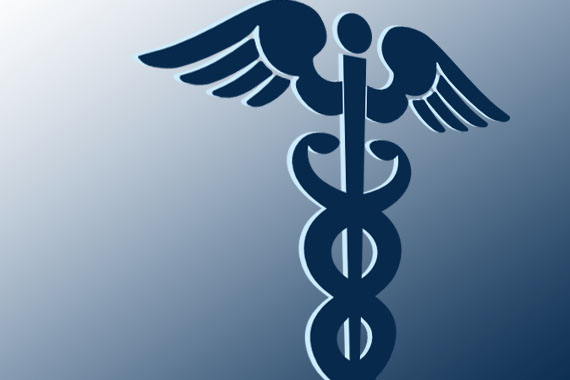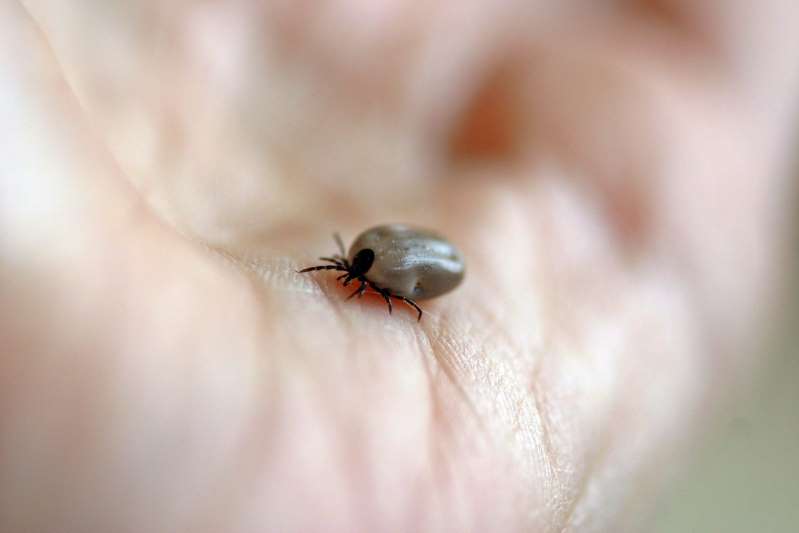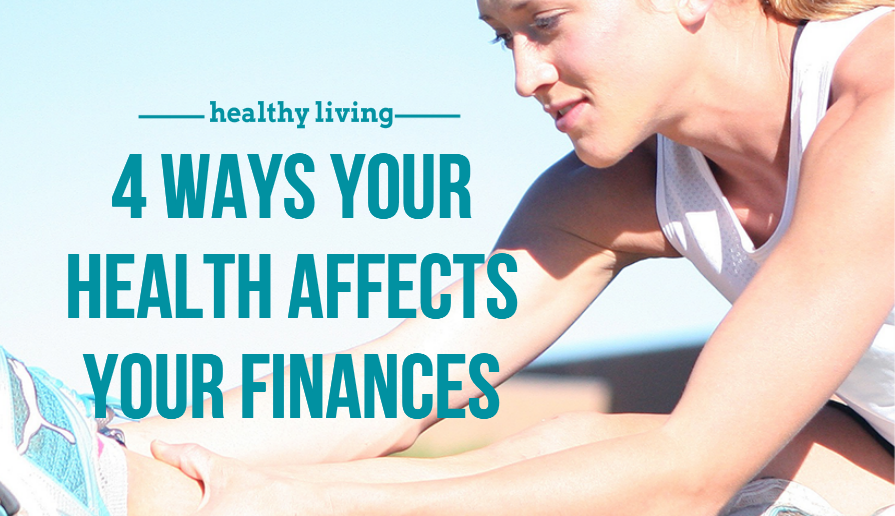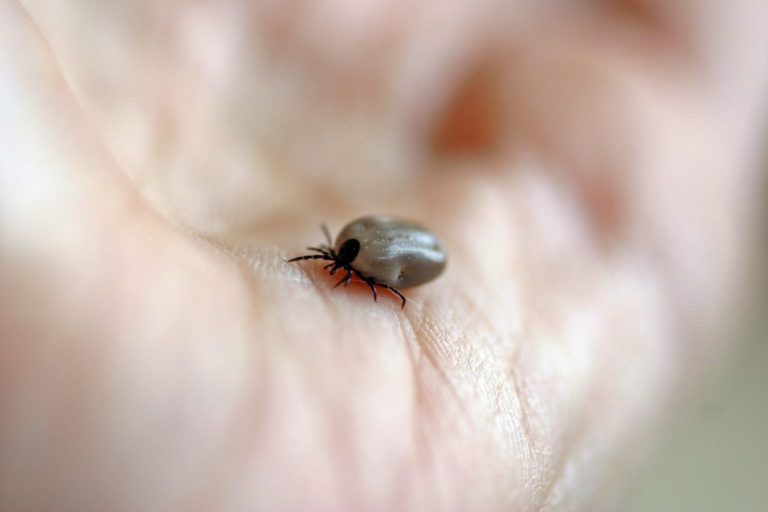Nature Knows and Psionic Success
God provides
A Meeting Format that Unleashes Attendee Brainpower

C&I requires small-group conversations every 15 minutes, keeping attendees focused and learning more. "Conversations & Input" eases presenter pressure, gets all attendees involved, and deepens learning. We’re all quite familiar with the Q&A portion of a meeting session: The final few minutes where the audience has its chance to drill down a bit with the presenter. But one participant asking a question to a presenter is the smallest form of interaction imaginable. What about all the other participants? They are simply listening. This means that, at best, three to five percent of the audience becomes actively engaged in that session. With a format called conversations & input (C&I), though, event organizers can radically improve audience activation and interaction, and deepen learning by orders of magnitude. What Is C&I? There’s more than one way to do it, but let’s start with the basic version. Set the room so that groups of six to eight people are around tables, or allow classroom-style seating to be moved to form a number of small semi-circles. After 15 minutes of presentation, the presenter pauses to activate the audience by introducing a conversation topic. It can be a question that always works: “What have you just learned?” or “What did you find interesting?” or “What elements can be applied to your work?” Of course, a more focused or specific question can be introduced, using a text slide in the presentation that remains on screen for the period of conversation. Next, the presenter tells participants that they have a specific amount of time (usually between five and eight minutes) to discuss the question in their group. As a result, several opinions and perspectives can move the conversation in any number of directions. After the period of small-group conversation, the presenter asks participants to conclude and then […]
LED device could increase memory retention among astronauts

Hanli Liu, professor of bioengineering at The University of Texas at Arlington. Credit: The University of Texas at Arlington Hanli Liu, a professor of bioengineering at The University of Texas at Arlington, is working to improve memory and cognitive function in astronauts during space missions by directing light onto their brains. Liu is co-primary investigator on an $800,000 NASA grant with Jacek Dmochowski, assistant professor of bioengineering at City University of New York, that will deliver a light -based technology to increase the energy available to brain cells and improve astronaut performance. UTA’s share in the grant is $321,608 for two years. Liu researches how to use lasers to deliver near- infrared light to the human brain to detect traumatic brain injuries and symptoms of post-traumatic stress disorder. Her recent work has broadened to investigate the neurophysiological principle of non-invasive delivery of near-infrared laser light to improve human cognition . This research has led to an understanding of how light can stimulate mitochondria, which are the powerhouses within cells, into creating more oxygen in the brain to increase cerebral metabolism and mitigate memory loss . With the new grant, Liu will investigate whether light-emitting diodes , or LED, can replace lasers as the delivery method for near-infrared light. Specifically, she will find the wavelength range and duration necessary to produce the desired effects. In general, lasers are heavy and bulky and would take too much space in the cramped quarters of a spacecraft or space station. LEDs are lighter and smaller and could be attached to a headband or similar device more easily stowed. Also, light delivered by LED is safer to human eyes than light from lasers. LED light in the red and near-infrared range is already in widespread use for relieving pain and treating acne, although few […]
Women Respond Very Differently Than Men To HIV And Treatment, But Most Research Subjects Are Men

“If we’re going to find a cure, it’s important that we find a cure that actually works for everybody,” said Rowena Johnston, a research director. Public health news focuses on reporting disparity, longevity, climate change, sleep apnea, mighty microbes, brain wearables, a rare women’s disorder, irritable bowel syndrome, mental health awareness on Instagram, mortality rates for pro athletes, spina bifida, ER visits, healthier beer and palliative care. Inspired by reports of a second patient apparently freed of infection with H.I.V., the virus that causes AIDS, scientists are pursuing dozens of ways to cure the disease. But now, researchers must reckon with a longstanding obstacle: the lack of women in clinical trials of potential H.I.V. treatments, cures and vaccines. Women make up just over half of the 35 million people living with H.I.V. worldwide, and the virus is the leading cause of death among women of reproductive age. In Africa, parts of South America and even in the southern United States, new infections in young women are helping to sustain the epidemic. (Mandavilli, 5/28) Hospital staff were significantly more likely to report harmful patient safety events for white patients than for black and other minority patients, a new study found. Rates of safety events that hospital workers voluntarily reported varied significantly by the patients’ race in a 10-hospital system located in the District of Columbia and Maryland from July 1, 2015, to June 30, 2017, according to the study in the Journal of Patient Safety. (Meyer, 5/24) Having a purpose in life may decrease your risk of dying early, according to a study published Friday. Researchers analyzed data from nearly 7,000 American adults between the ages of 51 and 61 who filled out psychological questionnaires on the relationship between mortality and life purpose. What they found shocked them, according to […]
If You Say Yes to Any of These 10 Questions, Science Says You Definitely Learn Faster Than Average

Who you know obviously matters. But when you’re trying to accomplish a huge goal, like starting and growing a business , or changing professions, or becoming an expert in your chosen pursuit… what you know, and what you can do with what you know, matters a lot more. Which means the faster you learn and the more you retain, the more successful you can be . Here are ten ways, backed by science, that show you know ways to learn faster than most people: 1. You "chunk" your study sessions. You’re busy. So you wait until the last minute to learn what you need to know: A presentation, a sales demo, an investor pitch… Bad idea. Research shows "distributed practice" is a much more effective way to learn. Imagine you want to nail your investor pitch. Once you’ve drafted your pitch, run through it once. Then take a few minutes to make corrections and revisions. Then step away for a few hours, or even for a day, before you repeat the process. Why does distributed practice work? The "study-phase retrieval theory" says that each time you attempt to retrieve something from memory and the retrieval is more successful, that memory becomes harder to forget. (If you go over your pitch repeatedly, much of your presentation is still top of mind… which means you don’t have to retrieve it from memory.) Another theory regards "contextual variability." When information gets encoded into memory, some of the context is also encoded. (Which is why listening to an old song can cause you to remember where you were, what you were feeling, etc., when you first heard that song.) That context creates useful cues for retrieving information. Regardless of how it works, distributed practice definitely works. Give yourself enough time to space out […]
50 Everyday Habits That Reduce Your Risk of Dementia

Everyday Wellness The dozens of choices you make over the course of any average day really can determine whether you’ll develop dementia years from now, as well as how quickly the disease will progress More and more research shows that lifestyle matters Karan Bunjean/Shutterstock A major report released by the Lancet International Commission on Dementia Prevention and Care in 2017 concluded that up to 35 percent of dementia cases can be delayed or even avoided altogether. “The main message is that there are modifiable risk factors that can reduce your risk,” says Maria C. Carrillo, PhD, the chief science officer for the Alzheimer’s Association . While you can’t change the genes you inherited, there are many probable risk factors that you do have some say over. Check out these 20 habits your 80-year-old brain will thank you for . Keep learning throughout your life Thinglass/Shutterstock Researchers say that when they look at brains during autopsies, they often see signs of damage (either plaque associated with Alzheimer’s disease or trouble with blood supply) even when the patient did not suffer from dementia. Because of that, they theorize that these people have “cognitive reserve”—meaning their brains have enough extra capacity to stay sharp despite physical damage. The Lancet Commission report emphasizes the association between lack of formal schooling and dementia, which suggests that what happens to us early in life can build this reserve: People with higher socioeconomic status during early childhood are less likely to develop dementia, and people who go to school at least through the secondary level are also better off. “This points to the fact that brain health and, really, overall health is a lifelong commitment—it’s even something we should be thinking about with prenatal care,” Carrillo says. But, she adds, that doesn’t mean you can’t continue […]
As plaque deposits increase in the aging brain, money management falters

Scans of two study participants show the brain of a cognitively healthy 74-year-old (top row) who demonstrated average financial skills compared to an 86-year-old with mild Alzheimer’s disease (bottom row) who demonstrated impaired financial skills. The bottom scan is positive for amyloid plaques, highlighted in yellow and orange throughout the brain and extending to its edges. Credit: Duke Health Aging adults often show signs of slowing when it comes to managing their finances, such as calculating their change when paying cash or balancing an account ledger. These changes happen even in adults who are cognitively healthy. But trouble managing money can also be a harbinger of dementia and, according to new Duke research in The Journal of Prevention of Alzheimer’s Disease, could be correlated to the amount of protein deposits built up in the brain. "There has been a misperception that financial difficulty may occur only in the late stages of dementia, but this can happen early and the changes can be subtle," said P. Murali Doraiswamy, MBBS, a professor of psychiatry and geriatrics at Duke and senior author of the paper. "The more we can understand adults’ financial decision-making capacity and how that may change with aging, the better we can inform society about those issues." The findings are based on 243 adults ages 55 to 90 participating in a longitudinal study called the Alzheimer’s Disease Neuroimaging Initiative, which included tests of financial skills and brain scans to reveal protein buildup of beta-amyloid plaques. The study included cognitively healthy adults , adults with mild memory impairment (sometimes an Alzheimer’s precursor) and adults with an Alzheimer’s diagnosis. Testing revealed that specific financial skills declined with age and at the earliest stages of mild memory impairment. The decline was similar in men and women. After controlling for a person’s education […]
Lyme Disease Can Be Avoided Naturally. Here’s How

Lyme disease is a growing concern in parts of the United States. While summer means goodbye to multiple layers and hello to shorter sleeves and pants, there is a downside. Summer also means spending more time outdoors. This, unfortunately, increases the risk of Lyme disease. Fortunately, researchers are discovering alternative natural ways to avoid getting Lyme disease Lyme Disease is an infection that occurs in the body following a tick or insect bite. The majority of Lyme cases are caused by a bite from the black-legged tick. The tick will become infected with a bacteria known as Borrelia burgdorferi after feeding on infected deer to mice. The infected tick then carries and passes on the bacteria, which then leads to Lyme disease. However, it should be important to note that the tick will have to be present on your skin for 24 to 48 hours in order to transmit the infection. While the Centers for Disease Control and Prevention (CDC) estimates that 300,000 people are infected with Lyme disease in the United States every year, many experts believe this number to be higher due to the fact that many people go undiagnosed. Celebrities have fallen prey to Lyme disease Indeed, Avril Lavigne is one of many celebrities who were not aware at first she had contracted the disease in her 2015 PEOPLE cover story , where the singer revealed she had been battling Lyme disease for a year. “I had no idea a bug bite could do this,” said Lavigne, who believes she was bitten by a tick in 2014. “I was bedridden for five months.” There are two types of Lyme disease: Acute Lyme and Chronic Lyme. Acute Lyme: This is Lyme in its early stages after you’ve been bitten and infected. Fortunately, if promptly and properly diagnosed […]
4 Ways Your Health Affects Your Finances

Wealthy people tend to be healthy people. When you think about it, it makes sense. People who take measures to save and care for their health tend to have a personality trait in common: conscientiousness. And a lot of it. Being proactive about living a balanced, healthy lifestyle puts them in a prime position to be happier and more proactive economically. Your personal health is connected to your financial wealth in ways you may not think. These reasons explain why the healthier also tend to be wealthier. Investing in your health has an excellent return Spending money on health is one of the best things you can spend your money on. Financially, healthcare plans save you money and HSA account providers even allow you to invest your account contributions. But wealth renders itself useless if your health is absent. Having good health allows you to enjoy the fruits of your labor. Choosing to eat organic, sustainable foods may be more expensive, but priceless to your health. Get a good night’s rest and earn more in the morning Healthcare professionals recommend that adults get 7-9 hours of sleep a night, but busy schedules don’t seem to allow that. When not fully rested, focus decreases and people are more likely to engage in impulsive behaviors. When you take the time to get enough sleep, you are more capable of better planning which results in less stress. Being organized and healthy rest combine for better decision making and mental clarity. People who can look to the future tend to manage their day-to-day better in order to do things like contribute to a 401K. High levels of stress negatively impact your health Stress makes our immune systems weaker. When work never calms down, you may notice an uptick of sneezing, coughing and piles […]
Bellville mother warns of mosquito-carried virus that was “literally torture” for her daughter

Lauren Zehner started first grade in mid-September, a little later than her classmates, after being hospitalized from a mosquito bite. Submitted Photo. BELLVILLE — Bellville mother, Holly Zehner had never heard of the “La Crosse” virus until late last summer. That’s when her 7-year-old daughter had already spent several nerve-racking nights in the hospital, suffered at least one seizure and was acting “out of her mind.” Now Zehner wants other local parents to be aware of the viral disease, which is spread by the eastern treehole mosquito and historically most common in Ohio . According to the Center for Disease Control, there have been 179 reported cases in Ohio between 2008 and 2017, more than the total in any other state. The cases vary in severity, but for Zehner’s daughter Lauren, the disease was “literally torture,” the girl’s mother recalled. Lauren, who was then 6, came down with what initially appeared to be a “summer sickness” last August and was taken to the hospital after her fever spiked to more than 105 degrees. She was diagnosed with a urinary tract infection and sent back home. “I knew that wasn’t what she had, but by the time we left, she felt so much better. She seemed like she was fine,” Holly Zehner said. But only 90 minutes later, she and her husband rushed their daughter right back to the emergency room, where she needed to be sedated for her blood work. “She had no idea what was going on. She was out of her mind basically,” Zehner said. Lauren was shaking, screaming and didn’t even recognize her mother. “She was saying, ‘Water. Water. Thirsty,” Zehner said. “So I gave it to her, and she threw it. Lauren was kept at Nationwide Children’s Hospital last August after she was bit by […]
Do Brain-Boosting Supplements Actually Work Or Are They Total B.S.?

Unable to play video. HTML5 is not supported! Content loading… Can a supplement really make you smarter? A quick online search for “mental clarity supplements” will turn up tons of products, such as Neurohacker Collective’s “Qualia Mind,” WTHN’s “Fully Charged,” and Bulletproof’s “Unfair Advantage, ” just to name a few. These supplements claim to improve focus, sharpen thinking, boost productivity and fight fatigue. It all sounds like something straight out of a gimmicky infomercial ― just another quick-fix product to buy to improve your health. But as it turns out, there is some science that supports the brain-boosting power of some (yet not all) of the ingredients in mental clarity supplements. And, of course, there’s also a catch (there’s always a catch). Here’s what you should know before you purchase them, according to experts: Which Ingredients Work And Which Need More Research Mr.nutnuchit Phutsawagung / EyeEm via Getty Images The more scientific classification of these supplements and their ingredients is called nootropics. The term, coined by psychologist Corneliu E. Giurgea in 1972 , describes natural or man-made substances designed to support cognitive functioning and improve mental performance. Other terms you may have heard for them could include “smart drugs” or “cognitive enhancers.” They range from familiar substances — such as caffeine or turmeric — to complex blends of many different herbs and other ingredients sold online. Now, for the million-dollar question: Do they work? Well, yes and no. The reason for this ambiguous answer? The research on brain-boosting supplements is ambiguous itself. While some of the ingredients in brain-boosting supplements have shown to be beneficial, the studies have been inconsistent, explained Dr. Michael Genovese , a clinical psychiatrist and chief medical officer of Acadia Healthcare. Plus, “unlike other medications, the [Food and Drug Administration] does not regulate the distribution […]
The Eyes Are the Prize: Eye-Tracking Technology Is Advertising’s Holy Grail
Bundled into VR headsets or AR glasses, eye tracking will enable companies to collect your intimate and unconscious responses to real-world cues. Avi Bar-Zeev spent nearly 30 years working on AR/VR/MR, helping companies like Disney, Microsoft, Amazon, and Apple make decisions about how to unlock the positive potential of new technologies while minimizing harm. Bar-Zeev helped start the original HoloLens project at Microsoft. Nothing in this article should be read as disclosing unannounced products or ideas from those companies. Humans have evolved to read emotions and intentions in large part through our eyes. Modern eye-tracking technology can go further, promising new wonders in human-computer interaction. But this technology also increases the danger to your privacy, civil liberties, and free agency. Bundled into VR headsets or AR glasses, eye-tracking will, in the near-future, enable companies to collect your intimate and unconscious responses to real-world cues and those they design. Those insights can be used entirely for your benefit. But they will also be seen as priceless inputs for ad-driven businesses, which will learn, model, predict and manipulate your behavior far beyond anything we’ve seen to date. I’ve been working to advance Spatial Computing (also known as AR, VR, MR, XR) for close to 30 years. Back in 2010, I was lucky enough to help start the HoloLens project at Microsoft. The very first specs for that AR headset included eye-tracking. My personal motivation was a vision for the next great user interface, one that dispenses with “windows” and “mice,” to let humans act and interact naturally in our 3D world. I am happy to see some form of these ideas included in the HoloLens v2, and also Magic Leap and Varjo headsets, to name a few. I’ve seen articles hailing the coming cornucopia of eye-tracked user-data for business. The gold […]
Eating polluted seafood can weaken your immune system, study concludes

( Natural News ) Eating fish rich in omega-3 fatty acids is good for your brain and heart health. However, an alarming study warns that consuming fish contaminated with toxins can harm your immune system. The study, published in the journal Science Advances , was conducted by researchers from the Scripps Institution of Oceanography at the University of California, San Diego . Polluted seafood and P-glycoprotein The toxins that contaminate fish in polluted waters also make their way to the food sold in markets. According to recent studies, eating polluted seafood can significantly damage the immune system. Researchers warn that dangerous pollutants can get lodged into the muscle tissue of certain types of fish. These pollutants can interfere with the body’s ability to eliminate toxins. (Related: Watch out – These 5 everyday products may be contaminated with plastics .) The most harmful pollutants found in fish are persistent organic pollutants (POPs), a class of toxic chemicals that reduce P-glycoprotein’s (P-gp) ability to expel toxins out of cells. P-gp is like a gatekeeper: It binds to foreign chemicals and forces them out of the body. Because of its critical function, the body needs adequate amounts of P-gp to make it insusceptible to toxins. For their study, the researchers tried to determine how effective P-gp is at expelling industrial and agricultural POPs from contaminated fish. They analyzed 10 different POPs and found that one POP called PBDE-100, a chemical used as a flame retardant in upholstery foam and plastics, attaches to P-gp ; but instead of being expelled, it works as an inhibitor and prevents P-gp from performing its defense function. The power of the elements : Discover Colloidal Silver Mouthwash with quality, natural ingredients like Sangre de Drago sap, black walnut hulls, menthol crystals and more. Zero artificial sweeteners, colors […]
The Eyes Are the Prize: Eye-Tracking Technology Is Advertising’s Holy Grail
Bundled into VR headsets or AR glasses, eye tracking will enable companies to collect your intimate and unconscious responses to real-world cues. Avi Bar-Zeev spent nearly 30 years working on AR/VR/MR, helping companies like Disney, Microsoft, Amazon, and Apple make decisions about how to unlock the positive potential of new technologies while minimizing harm. Bar-Zeev helped start the original HoloLens project at Microsoft. Nothing in this article should be read as disclosing unannounced products or ideas from those companies. Humans have evolved to read emotions and intentions in large part through our eyes. Modern eye-tracking technology can go further, promising new wonders in human-computer interaction. But this technology also increases the danger to your privacy, civil liberties, and free agency. Bundled into VR headsets or AR glasses, eye-tracking will, in the near-future, enable companies to collect your intimate and unconscious responses to real-world cues and those they design. Those insights can be used entirely for your benefit. But they will also be seen as priceless inputs for ad-driven businesses, which will learn, model, predict and manipulate your behavior far beyond anything we’ve seen to date. I’ve been working to advance Spatial Computing (also known as AR, VR, MR, XR) for close to 30 years. Back in 2010, I was lucky enough to help start the HoloLens project at Microsoft. The very first specs for that AR headset included eye-tracking. My personal motivation was a vision for the next great user interface, one that dispenses with “windows” and “mice,” to let humans act and interact naturally in our 3D world. I am happy to see some form of these ideas included in the HoloLens v2, and also Magic Leap and Varjo headsets, to name a few. I’ve seen articles hailing the coming cornucopia of eye-tracked user-data for business. The gold […]
Lyme Disease Can Be Avoided Naturally. Here’s How

Lyme disease is a growing concern in parts of the United States. While summer means goodbye to multiple layers and hello to shorter sleeves and pants, there is a downside. Summer also means spending more time outdoors. This unfortunately increases the risk of Lyme disease. Fortunately, researchers are discovering alternative natural ways to avoid getting Lyme disease But first, what is Lyme disease? Lyme Disease is an infection that occurs in the body following a tick or insect bite. The majority of Lyme cases are caused by a bite from the black-legged tick. The tick will become infected with a bacteria known as Borrelia burgdorferi after feeding on infected deer to mice. The infected tick then carries and passes on the bacteria, which then leads to Lyme disease. However, it should be important to note that the tick will have to be present on your skin for 24 to 48 hours in order to transmit the infection. While the Centers for Disease Control and Prevention (CDC) estimates that 300,000 people are infected with Lyme disease in the United States every year, many experts believe this number to be higher due to the fact that many people go undiagnosed. Celebrities have fallen prey to Lyme disease Indeed, Avril Lavigne is one of many celebrities who was not aware at first she had contracted the disease in her 2015 PEOPLE cover story , where the singer revealed she had been battling Lyme disease for a year. “I had no idea a bug bite could do this,” said Lavigne, who believes she was bitten by a tick in 2014. “I was bedridden for five months.” Lavigne has since established the The Avril Lavigne Foundation . The foundation is working with various Lyme disease organizations to raise money and awareness for the cause. […]
Yerba santa, a medicinal herb native to California, reduces swelling in the brain and could successfully treat Alzheimer’s

( Natural News ) Alzheimer’s disease is so frightening because we know so little about it and have yet to find an effective cure. This makes it hard to prevent – although herbs like turmeric and the antioxidants in blueberries show promise – and even harder to accept when you or a loved one are diagnosed with it. Now, some new hope is emerging in the form of a medicinal herb found in California . The herb, yerba santa, is known as “holy herb” in Spanish, and its effects could indeed prove to be divine as scientists are learning about its ability to reduce swelling in the brain and potentially treat Alzheimer’s disease. It has long been used medicinally by native Californian tribes, who brewed a tea using its leaves to address headaches, fevers, and respiratory problems; they also use it as a poultice for sore muscles, wounds and rheumatism. Researchers from the Salk Institute in La Jolla, California, recently revealed the strong neuroprotective and anti-inflammatory properties of the plant in a study that was published in the Redox Biology journal. They looked into the plant in hopes for finding ways to counter the effects of aging on the brain as Alzheimer’s disease has become the top cause of death in the U.S. They used a screening technique taken from drug discovery to look at 400 different plant extracts known to have pharmacological properties. In their study, a molecule known as sterubin, which is the active component of yerba santa, was tested on nerve cells in mice, along with other plant extracts. The researchers discovered that sterubin has a strong anti-inflammatory effect on the brain cells known as microglia, which are known to play a key role in the development of Alzheimer’s disease. Mother Nature’s micronutrient secret : Organic […]
3 ways yoga will change your body

A yoga body isn’t just about bendy limbs, the ancient practice can improve memory, heart and bone health, says Anna Magee We’ve become a nation obsessed with downward dogs and cat cows. Brits are now spending a staggering £790 million a year on yoga classes. In fact, while on one hand yoga seems to get weirder by the day – new hybrids include rage or naked yoga, poses done on paddleboard or horseback (seriously) and even dog yoga – on the other its real benefits are being increasingly proven by science. UCLA researchers have found a three-month course of yoga and meditation was more effective than memory exercises for minimizing age-related brain impairment while another found it could improve sleep in breast cancer survivors. a three month course of yoga was more effective than memory exercises for minimising age-related brain changes When Lucy Edge, 53, a former advertising executive fell into a deep depression she opted for yoga instead of the anti-depressants she was prescribed. ‘I took a six month career break and travelled to India to learn yoga and though I failed to get the yoga goddess body I came back happier and with a sense of contentment I had never felt before,’ Edge remembers. She’s since written three books about yoga and founded Yoga Meds, a section of her website Yogaclicks.com that lists over 300 clinical trials for yoga’s benefits for everything from arthritis to insomnia and obesity. ‘Yoga was so beneficial for my depression, I wanted to tell the world about its joys. But as the daughter of a scientist [Lucy’s late father was Professor Gordon Edge, creator of the Cambridge Cluster] I didn’t want to make mad claims, I wanted evidence and found so much of it for yoga,’ Lucy remembers. Here are some ways […]
10 Ways To Protect Your Brain and Keep Alzheimer’s At Bay

Far too many of us these days have had some experience with friends or loved ones who are dealing with Alzheimer’s and it’s heart-breaking physical, emotional and mental impact. Though many of us witness the disease at arm’s length, it’s hard not to think about the frightening specter of Alzheimer’s possibly affecting our own brains someday. How to side-step this scourge? Though we don’t have all the answers yet, we do know that a healthy lifestyle can have a big impact on reducing risk, slowing the progression of the disease and possibly even torpedo it all together. My advice? Start turning the tide and try incorporating these 10 do-now, brain-health habits to help keep yours in top form and trouble-free for years to come: 1) Delete pro-inflammatory foods from your life. In addition to setting you up for obesity and type 2 diabetes, sugar may also be destroying your brain cells! In fact, many scientists are now calling Alzheimer’s the ‘diabetes of the brain’ or ‘diabetes 3’ – making avoidance of all that sugar and excessive carbs endemic to the Standard American Diet (SAD) absolutely essential – that is, if maintaining a healthy brain is your goal. Other key brain-health killers to avoid: the cocktail of chemicals, industrial seed oils (aka vegetable oils), processed foods, and factory-farmed meats, which are, in addition to carbs and sugar, are cornerstones of the aptly acronymed ‘SAD.’ They too are robbing your brain and body of health by perpetuating the kind of disastrous, almost non-stop inflammation that sets the table for life-altering neurological problems and disease. 2) Feed your brain what it needs! Trading sugars, industrial oils, processed foods, and factory-farmed meats for real, whole, nutrient-dense foods will give brain-health a boost by supplying your brain-protecting ‘glial’ cells with the nutrients they need […]
Enhancing Cognition in Older Adults With Intermittent Hypoxia and Cognitive Training
The purpose of this study is to investigate the effect of a neuroplasticity-based computerized cognitive training for the elderly The overall objective of this project is to investigate the effectiveness of daily acute intermittent hypoxia therapy (dAIH), coupled with massed practice training, to improve upper-extrem… This project seeks to investigate the effects of a single acute intermittent hypoxia (AIH) session on respiratory and non-respiratory motor function and EMG (electromyography) activity on … The purpose of this research study is to investigate the effectiveness of a combinatorial therapy of breathing low oxygen in short bursts-acute intermittent hypoxia (AIH) and upper limb tr… This study will utilize short duration and mild levels of reduced oxygen (hypoxia) to induce spinal plasticity while evaluating the appropriate timing schedule for this intervention, as we… Computerized multi-model training has been widely studied for its effect on delaying cognitive decline. In this study, we designed the first Chinese-version computer-based multi-model cognitive traini… The synergistic effects of HIV and aging on the brain may compromise cognitive reserve, resulting in HIV-associated neurocognitive disorder. The neuroscience literature suggests that computerized cogn… Computerized cognitive training in young adults with depressive symptoms: Effects on mood, cognition, and everyday functioning. Computerized cognitive training (CCT) has previously improved cognition and mood in people with depression. Existing research has not determined if the benefits following CCT are specific to the conte… Cognitive impairment is highly prevalent in patients with heart failure (HF), negatively impacting self-care and consequently increasing mortality. Although computerized cognitive training (CCT) has b… Roles of oestradiol receptor alpha and beta against hypertension and brain mitochondrial dysfunction under intermittent hypoxia in female rats. Chronic intermittent hypoxia (CIH) induces systemic (hypertension) and central (mitochondrial dysfunction underlying cognitive deficits). We hypothesized that agonists of oestradiol receptors (ER) α … Medical and Biotech [MESH] Definitions […]
5 Brain Foods to Help With Productivity Throughout The Work Day

— Many believe that if they are looking to curb their massive hunger throughout their day, especially at work, then they can snack on just about anything and they will be ok. The truth is, taking time to understand what you are going to be consuming throughout the day between the three major meals is key. You want to be sure that you are consuming foods that will still allow you to be as productive as possible while allowing you to maintain focus and relaxation as well. Some of the best and most effective foods may surprise you, as they aren’t necessarily the ideal snack that many would choose. Don’t get lost in the thoughts of yesteryear of believing that healthy snacks are only rice cakes and chalky tasting drinks. Take a moment and walk into a health food store and see all of the remarkable options available. After reading this article, it’s sure that you’ll look at eating healthy snacks to keep your level of productivity and accomplishment steady at work, will change. It’ll be a much more inclusive list I’m sure. Tasty reading. Below are 5 brain foods that can help you maintain productivity throughout your work day: 1. Blueberries Blueberries are a fruit that are rich in antioxidants and tasty. They are very popular and grown in abundance commercially in North America and Europe. There are two different types of blueberries, highbush and lowbush. Lowbush blueberries are considered healthier and are almost always sweeter than their cousins, highbush blueberries. They are also called wild blueberries and thrive in the colder regions of the country. Probably one of the most important facts about blueberries is there benefit for improving memory. A common way for blueberries to be consumed besides eating them outright is by adding them into […]

